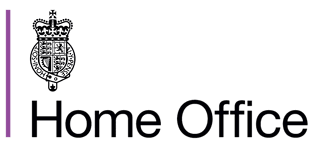The press release issued by the Home Office on 20 April 2023.
New data released today (20 April) reveals the largest quantity of cocaine and ketamine seized by Border Force and police forces since records began.
Record amounts of cocaine and ketamine have been seized by Border Force and police forces, new data released today (20 April) shows.
Border Force and police forces’ record seizures of tonnes of illicit drugs helps to break criminal gangs’ supply chains, keep our borders secure and communities safe.
In the year ending March 2022, 188,929 drug seizures were made in England and Wales with so-called party drugs cocaine and ketamine reaching the highest levels of seizures on record.
The quantity of cocaine seized rose by 68% to 18,767kg, while the quantity of ketamine confiscated rose by 884% to 1,837kg.
The record amounts seized were driven by an increase in the number of high-quantity and intelligence-led seizures by Border Force. Although police forces accounted for 89% of the number of seizures, Border Force seized a much a higher proportion of drugs in terms of quantity.
Border Force is often involved in operations where large quantities of drugs are seized, for example at airports or maritime ports.
In the year ending March 2022, law enforcement action by Border Force made up 91% of the quantity of all cocaine and ketamine seizures, 97% of anabolic steroids and 79% of heroin.
Working in partnership, Border Force, police forces the National Crime Agency and international partners use intelligence and technology to keep our borders safe, prevent drug trafficking and bring those responsible to justice.
Expert staff use a range of methods including high-tech search equipment and visual checks to detect illegal and restricted goods that criminals attempt to bring into the country.
These statistics are the first to be published which cover a period following the announcement of the government’s 10-year Drug Strategy to tackle the harms caused by drug misuse in December 2021.
Securing the border to crack down on supply chains and criminal gangs profiting from the trade in illegal drugs forms a key part of the strategy, which will see £300 million invested in pursuing and closing down the ruthless gangs who exploit and threaten our most vulnerable in society for financial gain. A further £780 million will be invested in treatment and recovery.
Today, Immigration Minister Robert Jenrick is visiting Border Force officials at Heathrow Airport, to commend to their commitment to tackle and break drug supply chains and stop these harmful substances from entering the UK.
Immigration Minister Robert Jenrick said:
We will continue to back Border Force and the police to use every available power to stop dangerous drugs from coming into our country and enforce the law.
Data released today, which includes a record amount of cocaine and ketamine seized, shows the effectiveness of our approach as we continue to go after the criminals who blight so many communities and destroy lives with these harmful substances.
Steve Dann, Border Force Chief Operating Officer said:
These seizures send a clear message to anyone prepared to smuggle illegal drugs into the country that we remain committed to tackle often violent and exploitative drug supply chains.
Border Force Officers involved in these seizures can be proud of their work in stopping these dangerous drugs from entering our communities.
In the year ending March 2022, Border Force and the police seized the following quantities:
- for Class A seizures, 18,767kg of cocaine, 1,412kg of heroin and 43kg of crack cocaine
- for Class B seizures, 35,436kg of herbal cannabis, 1,837kg of ketamine and 243kg of amphetamines
- for Class C seizures, 2.5 million doses of anabolic steroids and 21kg of GHB
In the year ending March 2022, 188,929 drug seizures were made in England and Wales. Although this is a 14% decrease on the previous year, this is likely due to increased drug enforcement activity during COVID-19 lockdowns that has since returned to pre-COVID-19 levels. Nevertheless, the total number of seizures remains the second-highest number of seizures since the year ending March 2014.
